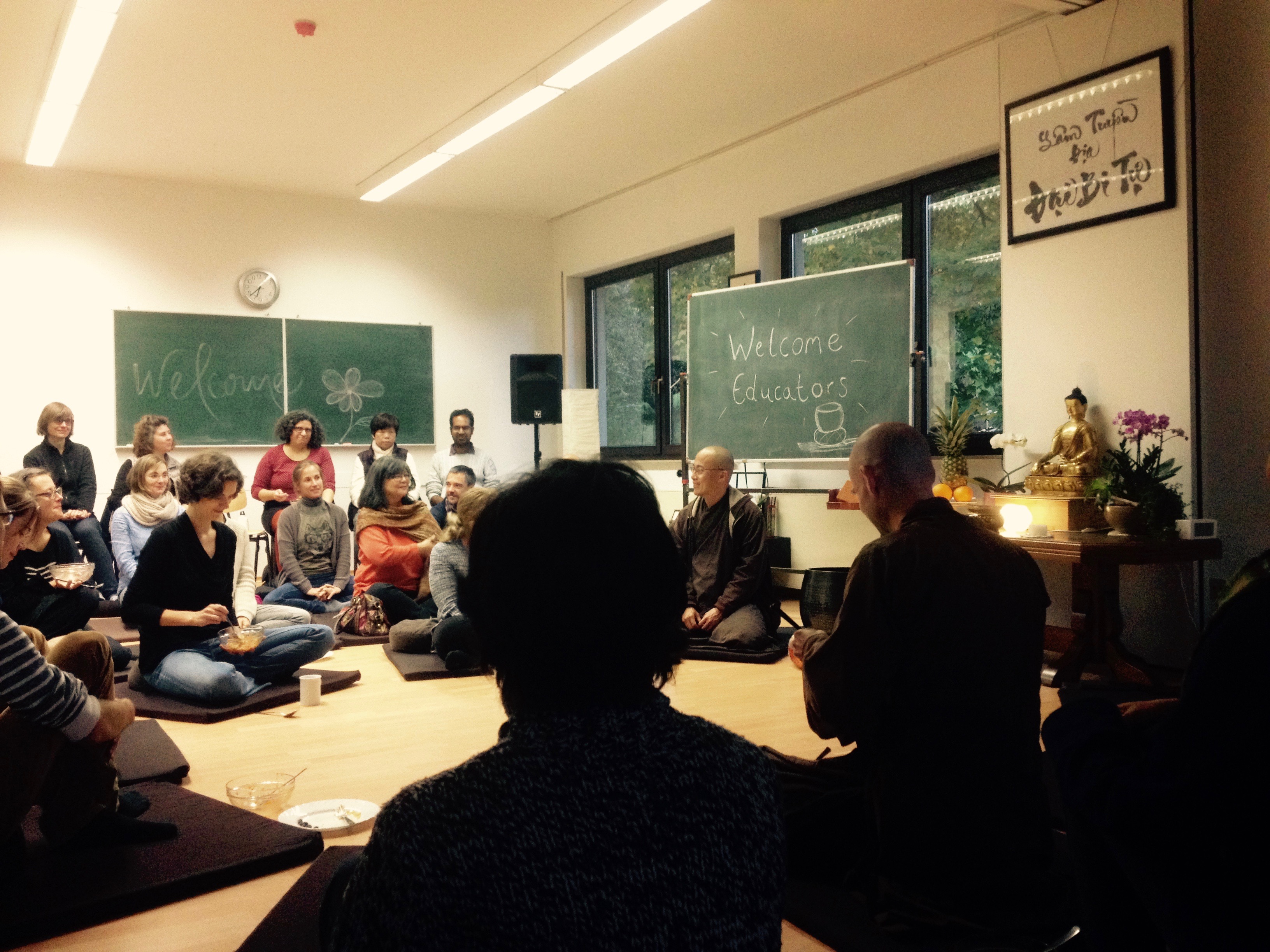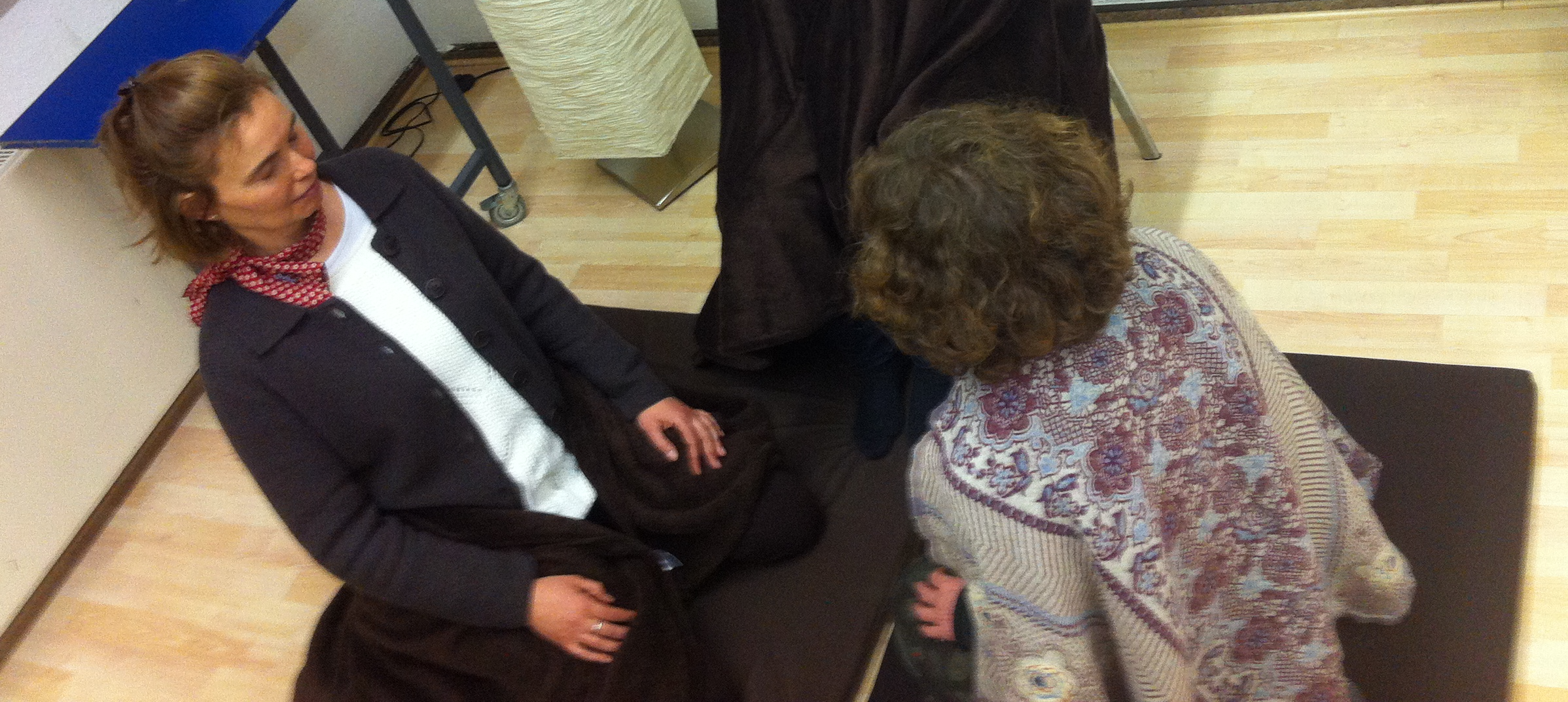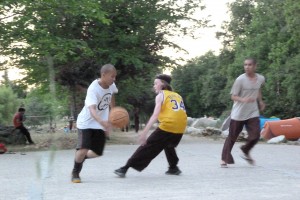I have been practicing meditation in the tradition of Thich Nhat Hanh for quite some years and I am especially grateful to my sangha in Berlin-Zehlendorf. Without my sangha it would have been so much more difficult to follow the path to inner freedom and peace. Being continually reminded by dear friends keeps my practice alive and whenever my unwholesome habit energies take control over me, I think it is time for another retreat. So it happened in fall 2016 when I read about the educators retreat at the EIAB in Waldbröl. I registered and hoped to bring my personal practice together with my profession as a teacher.

The nine-day retreat was primarily designed for us educators to practice and be open to the present moment. Later on in the retreat, we focused more on how to practice mindfulness in the classroom. We had dharma sharing circles every afternoon in English as the language of communication. As the retreat took place in Waldbröl, Germany, there were obviously a lot of teachers from Germany among educators from about ten different countries.
I noticed that students wish to be deeply listened to and also wish to listen deeply to others’ emotions and experiences.
I was impressed by the level of English the native speakers of German used when they shared very deep emotions and experiences. Some of them had hardly ever spoken English or had not used their knowledge from school in a long time, but they were able to express their feelings in a foreign language with the help from everybody because the whole circle was suggesting expressions when the speaker was lost for words. These circles inspired me to try out mindful sharing in my English classes at my school (in Germany) because the purpose of a language is to be able to communicate your thoughts and emotions. In addition, I noticed that students wish to be deeply listened to and also wish to listen deeply to others’ emotions and experiences. However, in the classroom a foreign language is often just practiced for the sake of learning rather than for communicating personal experiences or insights.
 After my first educators retreat in fall 2016, I came back to Berlin and tried sharing circles out in my English classes. In the second educators retreat in April 2017, I had the opportunity to talk about my experiences with mindful sharing in the classroom in front of the other teacher retreatants, which I am sharing here with you here:
After my first educators retreat in fall 2016, I came back to Berlin and tried sharing circles out in my English classes. In the second educators retreat in April 2017, I had the opportunity to talk about my experiences with mindful sharing in the classroom in front of the other teacher retreatants, which I am sharing here with you here:
When I invite my students to share, first of all I have to establish the right environment, which means:
- I choose the right date for myself and the students (no exams on the same day, no challenging meetings, etc.);
- I try to be especially mindful taking enough time practicing sitting meditation at home before I leave for school ( I always have a lesson plan B in store in case something very unsettling is happening on the way);
- I ask the students to sit in a circle (removing the desks already establishes a more intimate atmosphere);
- then I start by giving an introduction into mindful listening (i.e. students should listen without judging other students, but instead focus on their own bodies and minds) and mindful speaking (sharing experiences, not concepts or arguments as usually asked for in the curriculum);
- I ask them to choose a gesture to make sure everybody knows when they start and finish sharing (they can join their palms, but any other gesture is fine, too);
- I tell them that they have up to 3 minutes to share, after 2 ½ minutes I give them a signal to slowly come to an end;
- I make sure that we take turns. If someone does not want to share that is fine, but I politely invite the students who had not shared in the first round to share afterwards. And most of the time they do so then. They just seem to need a little more time to warm up.
- It is important to mention that I choose the topic we share about because as a pioneer of establishing sharing circles in the classroom, I feel obliged to not move too far off the curriculum. In my advanced English class, for example, the semester topic was “The impact of the media on society”, consequently I invited to share about their experiences with the new media. Trying to connect the class topics to the students’ personal experience might prevent sharing circles from being too emotional for a class to deal with.
- I also noticed that it is a good idea for me to start sharing. The students, for instance, felt very touched when I shared about the difficulties I have with my 15-year-old son and his intense computer game and mobile phone consumption.
In my English classes the sharing circles helped to improve the course atmosphere because the students feel recognized. They very much enjoy not to be interrupted and to be listened to by an attentive and mindful audience.
Thanks to all the facilitators of the educators retreats for inspiring me to use mindful sharing circles in the classroom.


